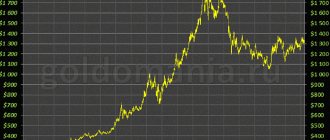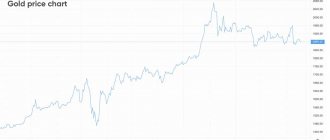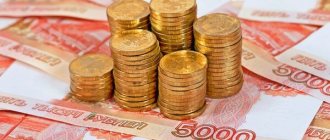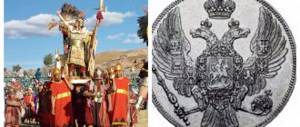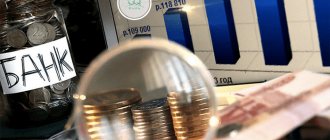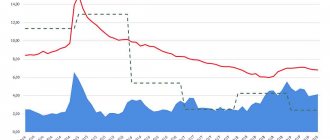January went according to my expectations. Before the Biden administration, markets maintained a wait-and-see attitude, which resulted in reduced volatility throughout the month. However, much is still unknown: how will COVID-19 ultimately impact the economy and how will it recover in 2021?
Economic indicators are still useless and there is no point in analyzing macroeconomic factors. Do employment, GDP or PMI play any role? I don't think so.
Nowadays Modern Monetary Theory (MTT) rules everything. Investors are optimistic because the Fed can print whatever amount they need, but no one thinks about the dangers of doing so. Printing a trillion dollars in one day is now considered an economic norm.
This madness has no precedent, and SDT is just the tip of the iceberg. This month, the still-sitting US president was kicked off social media. Brokers are halting stock sales as millennials rally on social media against shorting. What strange things await us next?
Market Correction Coming
What is clear is the fact that the stock market will soon enter a correction phase. The stock market has been rising since March last year, apart from one minor correction in September. At some point, this growth has to correct, and given the decline in earnings, this could happen in the next few months. In fact, I think the correction will come as early as February.
As you can see on the S&P 500 chart, the trajectory from 2200 to 3800 already resembles a top. Some analysts expect the index to rise to 4000 and even 4500. It could rise a little higher, especially if the correction does not begin until April or later, but an intermediate high is not far off.
When the S&P 500 peaks, we will see a sell-off across the board, excluding the dollar and bonds (if history repeats itself). It will also hit the market for gold, silver and mining stocks. I expect gold to find its low above $1,700 and silver above $18.50.
Current reserves and production of gold in the world
Of course, not everything is so rosy. Investors' interest in geological exploration is declining. Searching for and developing mines requires financial, technological, and human investments. The investor is confident in the systematic receipt of profit after putting the deposit into use. Sanctions on imports and exports raise fears and discourage the expansion of the industry.
Current government reserves:
- America has the largest reserve of aurum in the world. At the beginning of the year, there was a huge amount in the country's storage facilities - 8133.46 tons, or 75% of the US foreign exchange reserve.
- Germany ranks 1st among European countries. National savings of the precious metal amount to 3373.6 tons (70.2%).
- Italy comes next - 2451.84 tons (67.5%). It is worth noting that aurum reserves there have remained stable for 19 years.
- France ranks 3rd in Europe in terms of public savings - 2436.0 tons (64.9%).
- Russia leads among the CIS countries and ranks 5th in the world in terms of gold reserves. At the beginning of the year, the volume of gold in storage was 1838.8 tons (17.7%).
The Central Bank of the Russian Federation annually increases gold reserves; in 2021 alone, the state increased the potential by 223.6 tons.
Weekly gold chart
In an ideal scenario, gold would hold at $1,800 and silver at $22, but I don't think we'll be lucky. Prepare to buy on dips that could be quite significant. According to the weekly gold price chart, the $1,700 area does not look like a strong support line, and gold may sink to $1,600. But I still believe that the first zone should withstand the onslaught.
How can you invest in precious metals?
Having forgotten for a while about all sorts of fluctuations in the precious metals market, let us remind you how you can invest in precious metals:
- Open compulsory medical insurance;
- Buy bullion;
- Open a “metal” deposit.
Compulsory medical insurance can be opened with your “physical” gold credited to it, or with the acquisition of “virtual” gold. The period for placement of gold is not agreed upon in advance, and no interest is charged on the metal. Your profit depends entirely on the situation on the world market. When the price of gold rises significantly, you have the right to withdraw your money or gold at any time without loss, as with a regular deposit.
It doesn’t take much time to buy a gold bar. All you have to do is come to the bank with your passport, after which you will have the opportunity to purchase a gold bar at the rate offered by the bank. You need to remember a few nuances: the metal should not be removed from the packaging in which it was given to you, and you also need to keep all receipts and certificates. After which, when there is a significant jump in the price of gold, the bullion can be sold, perhaps even to the same bank.
As for deposits, the situation here is somewhat different. Interest on deposits in gold is low and rarely exceeds 5%; it can be opened for 3 months or more, just like a regular deposit. Each bank sets its own minimum deposit of precious metal in order to open a deposit in gold. Some set a minimum of 20-50 grams, but there are banks that set a minimum of 300-500 grams, and some even 1000 grams.
Sales will be followed by strong growth
Although I am bearish in the near term and foresee significant sell-offs in the gold and silver markets, strong gains will follow.
From my point of view, events will develop as follows. The key driver for gold and silver will be trading on fear. After the events of September 11, 2001, the price of gold rose from $250 to $1,930. The trade, fueled by fear, lasted ten years and has remained on the sidelines for ten years. In 2021, this trend will change.
Silver will follow gold higher and the GSR (Gold to Silver Ratio) will fall below 50. You don't have to watch silver, just watch gold and know that silver will rise due to the GSR contraction. Why will the ratio decrease? For the same reason as during the last bull rally when the index fell below 40. Typically, investors ignore silver, but not during periods of panic.
What could bring gold trading back on the scene amid concerns? There are many contenders, but it usually all comes down to one thing - the stock market. When investors are worried about stocks, they buy bonds and gold. Investors are currently very optimistic about the stock market, but sentiment is already nearing its peak.
MDT is a false economic theory that implies that debt is not important. Incredibly, almost the entire economy supports this fantastic theory. Politicians bought into this and lost all fear of huge budget deficits.
At this time, the US budget deficit and money supply are growing rapidly. We used to think that budget deficits of $100 billion a year were a problem. Now programs to support the economy are in the trillions, and no one even blinks an eye.
The US is playing a dangerous economic game. With the prerogative to control the global reserve currency, they have the ability to print huge amounts of money. The rest of the world needs dollars for use in international trade, as well as for payments on dollar-denominated debts. This has become a Ponzi scheme where the United States receives dollars from foreigners (new money) to pay investors (the US).
The world clings to this scheme and begins to realize that their investment will never pay off. And they are right. The US ends up using a Ponzi scheme through New Economic Theory (NEE) to keep everyone in the dark about what is really going on - America is going broke.
In this scenario, is there any reason to believe that the S&P 500 will continue to rise without a correction? Will gold fall below $1,700 and silver below $18.50? I do not believe in this. Instead, I expect a breakthrough of historic proportions.
During the previous bull market, the price of gold rose from $250 to $1,930, an increase of 650%. It is unlikely that gold will repeat this success, but the values will be close. Silver is likely to do even better, and if the price jumps from $18.50 to $150, that would be a 700% gain.
The next interesting stage for silver is reaching an all-time high of $50 dollars per ounce. Once the price of silver closes above $27, bankers will have a very difficult time stopping the further rise to $30 - they will only have a few weeks to do so. On Friday, January 29, the precious metal finished the week above $27, but I expect bankers to push it back down over the coming weeks.
Why is it difficult to stop silver's rapid rise from $27 to $30? Because in August the interim high was $29.80 and it acts like a big magnet pulling the price towards itself. The only thing that prevents such magnets from working are resistance levels or fundamental parameters. So, if fundamentals (like a strong stock market) go out of play, the only thing you can rely on is resistance lines, but there are no resistance lines between $27 and $30 on the silver chart.
The next point of attraction is at $35, the last resistance barrier before $50. This is a bankers' nightmare; Once the price of silver crosses the $30 area, it will jump to $35 to take a final breather. After this, silver will head towards the $50 dollar zone and a historical top. Get ready, the moment is coming.
And remember: silver follows gold! Silver will not be able to make it this far unless gold begins to rise due to fear trading. When silver reaches $50, gold will already cross $2,000 and will be trading in a range with an upper limit of $2,500. Given these values, the GSR will be 50. These are my expectations and this will be a big step for the gold market.
I don't think this will happen in the first quarter - it's too early. Most likely, a huge rally in gold and silver will begin in the second quarter and continue into the third quarter of 2021.
How and why gold is becoming more expensive
On July 23, during trading on the Singapore Precious Metals and Gold Exchange (SGPMX), the cost of an ounce of gold reached $1,892.3, SGPMX representative in Russia and Austria Olga Raikes told Secret.
Thus, this precious metal has updated the value record of 2011, she noted. On other sites, the price also approached its historical maximum. In total, since the beginning of 2021, gold has already risen in price by more than 20%.
Gold is a protective asset that traditionally rises in price during crises. This time, the growth in value was influenced by the fact that central banks of different countries are trying to stimulate the economy: they lower rates, and also turn on the “printing press” and increase the amount of money in circulation. Treasury yields have fallen as investors look for alternatives. And they find it in gold, analysts explain.
“The issue of funds can lead to the depreciation of the dollar, which ensures inflows into gold,” Denis Ikonnikov, portfolio manager of the investment company QBF, told The Secret. “Political instability due to the escalation of the conflict between the United States and China also contributes to the popularity of gold.”
Investment strategy
The hardest part for investors will begin when the above highs are reached. What to do with shares of gold and silver mining companies? Sell and take profit? How long to participate in the rally? Should I start trading? These are difficult questions, and therefore it is worth thinking about them in advance and drawing up an investment strategy.
Once the $50/$2,500 mark for silver/gold respectively becomes a reality, it will be necessary to decide how much longer the current bull market can last. The leverage of mining companies will increase, and higher prices for precious metals will directly affect stock valuations, which will rise at an unprecedented rate. Yields on some securities can jump as high as 100% in a matter of days, like GameStop did this week.
Hedging will be of particular importance. During periods of strong growth, you can't leave your investment portfolio unprotected, so hedging should be part of every strategy.
Let's go back to history
For about two thousand years, gold has performed the function of money that is familiar to everyone - at one time there were gold coins, the yellow metal was the equivalent of the cost of a particular product or service. A little later, paper and electronic money appeared, but they will still essentially be worth nothing if they are not backed by gold. In fact, for a long time gold continued to be the “ideal currency”, and its value grew almost as quickly as the world economy.
But sooner or later everything ends, and in 1971 the world decided to abandon the so-called “gold standard” and placed its bet on managed currencies, which could increase in volume faster than the economy could grow. In fact, the whole world supported the initiative and agreed to the volatility of the value of currencies in exchange for manageable economies and growth incentives.
In accordance with this development of events, it is already difficult to say that world wealth can correspond to the amount of gold reserves, and the cost of the precious metal is determined in the same way as any other commodity, namely by the level of supply and demand.
